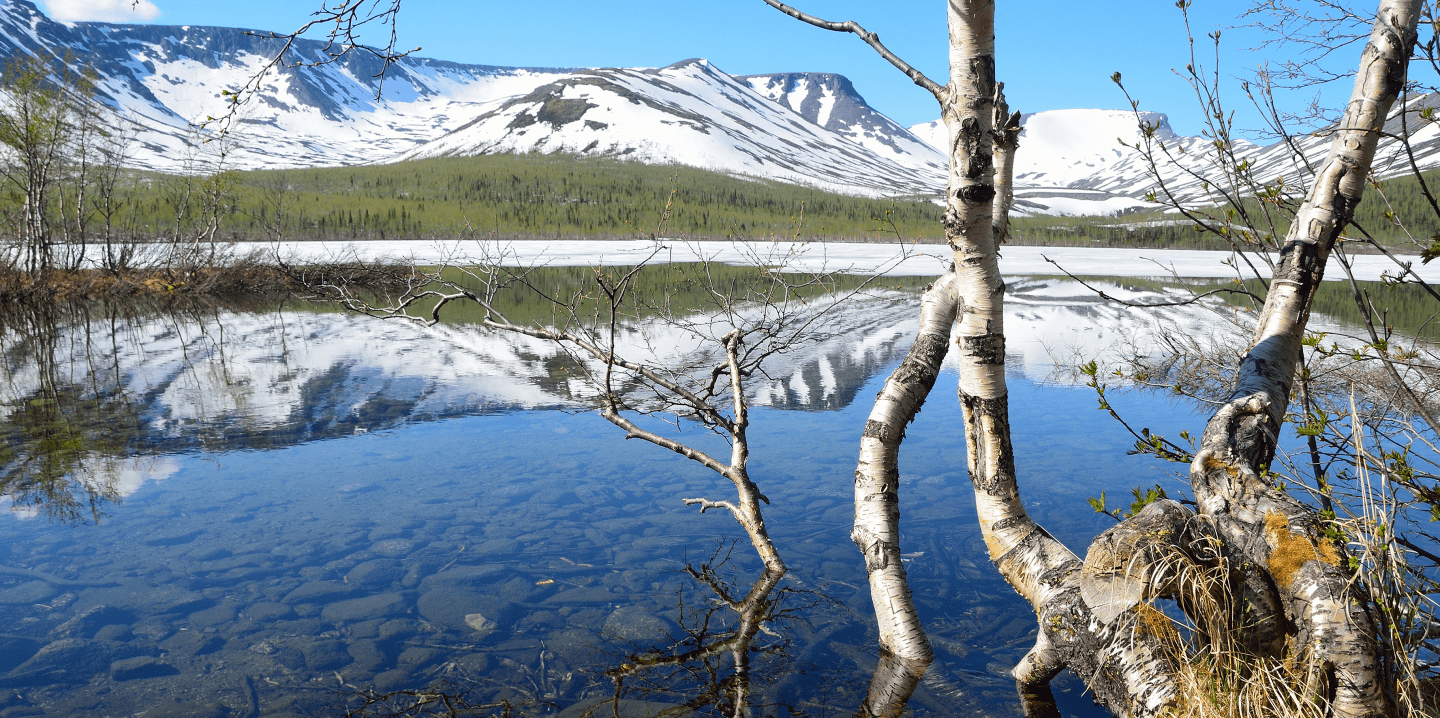Water
Protection of water bodies
GRI 303-1, 303-2, 303-3, 303-4, 303-5, SASB EM-MM-140a.2Nornickel takes a responsible approach to its use of water resources. The Company withdraws water for production needs strictly in line with the pre-approved limits and consistently ensures compliance with permissible wastewater discharge limits based on the Group companies’ corporate environmental reporting and its analysis.
Nornickel uses water from surface and underground sources for drinking and production needs, as well as for recirculating and recycling water supply. The Company regularly runs observation programmes for water bodies and water protection zones that serve as water sources for Nornickel. In 2022, no major impact of Nornickel’s operations on water bodies was identified; water withdrawal was within the pre-approved limits. No water is withdrawn from the bodies included in the Ramsar Convention on Wetlands of International Importance. The Company’s areas of operation are not water-scarce.The methodology to identify water-scarce areas is based on the data of the Aqueduct project of the World Resources Institute and Climate Zoning of the Russian Federation.
To decrease withdrawal volumes, the Company continues to improve its closed water circuit, which enables efficient use of water resources. In 2022, 82% of all water used by the Company was recycled and reused.
Nornickel has in place a Position Statement on Water Stewardship, which outlines key relevant principles, commitments, initiatives and targets.
The Company works to reduce and, where possible, prevent negative impact on water resources caused by production and delivery operations.
Management of water stewardship risks
To manage risks, Nornickel regularly assesses its impact on water resources using the following procedures:
- wastewater inventory;
- monitoring of effluent volumes and quality at the discharge locations;
- observations of surface water bodies at control points upstream and downstream of the discharge locations;
- monitoring of wastewater treatment processes at treatment facilities and taking measures to improve treatment efficiency.
Water withdrawal in 2022 remained broadly flat y-o-y.
The water consumption for production needs increased due to the launch of new shops at Kola MMC, ramp-up of the Carbonyl Nickel Section, achievement of the designed capacity of the concentrate shipment section of the concentrator, and commissioning of a system for commercial accounting of power consumption at Polar Division.
Nornickel’s wastewater discharges into water bodies are predominantly in line with the pre-approved limits as required by Russian laws. Effluent discharge in 2022 went down by 13% y-o-y. The discharge of wastewater pollutants in 2022 decreased by 12% y-o-y, mostly due to changes in mine workings’ inflow caused by weather conditions.

Impact of transport on water bodies
GRI 303-1The Company operates water and other modes of transport, which affects the environment. Nornickel’s impact on water bodies was analysed during the big scientific expedition.
The environmental impact of water transportation largely arises from:
- use of oil-containing fuel (mainly diesel fuel), which directly contributes to air pollution during combustion and indirectly – to water bodies’ contamination;
- noise pollution affecting hydrobionts, marine birds and marine mammals;
- ballast, bilge and wash water sent by the Company to treatment facilities and then discharged into water bodies.
A fuel spill has the most potential adverse impact and is the key hazard for marine mammals.
The Company recognises that there are risks that may potentially lead to adverse environmental impacts. These risks include:
- losses during cargo operations (loading and unloading of oil products, bulk cargo, other substances);
- fuel spills;
- emergencies (leakage of oil products into water bodies);
- dispersal of invasive species by ballast water.
Risks associated with the negative impact of the Company’s transport on water bodies are identified and mitigated within the framework of the environmental risk management system.
Nornickel’s management of its impact on water bodies includes liaising with a wide range of stakeholders, in particular external experts and employees directly engaged in operations involving the Company’s water transport. Interaction with dedicated professionals helps Nornickel be more effective and efficient in reducing the negative and building up the positive impact on water resources.
In managing its impact on water bodies, the Company regularly carries out:
- pollutant emissions and discharges’ review;
- industrial environmental control;
- measurement of the volume of water withdrawn from water bodies, as well as the volume and quality of effluent discharge, including drainage water;
- observations of water bodies (their morphometric features);
- observations of water protection zones;
- development of standards.
To reduce its environmental footprint, the Company also implements environmental protection measures and programmes aimed at reducing fuel consumption and preventing contamination of the Dudinka and Yenisey rivers. To compensate for the estimated damage to aquatic biological resources, Nornickel regularly releases juvenile fish.
Port infrastructure, including water transport with a negative impact on the environment, is operated in accordance with the Russian laws.
In 2022, Yenisey River Shipping Company (part of the Group) spent RUB 301.7 mln on environmental protection, up 65% y-o-y.
The funds were mainly used to support the maintenance and operation of the auxiliary fleet which serves to prevent river water contamination during the operation of vessels. The auxiliary fleet comprises five waste collecting vessels with a carrying capacity of 100–600 t, two vessels for complex waste processing and two treatment plants located at Podtyosovo and Yermolaevo repair and operations bases.
In 2022, Nornickel expanded its environmental fleet with Sborshchik-2, a motor vessel with a capacity of 150 t, which was acquired and put into operation after a repair.
During the navigation period, waste collecting vessels collect oil-contaminated water, sewage and rubbish from motor vessels along the Yenisey River and the Lower Angara River. Yenisey River Shipping Company has a licence to collect, transport, treat, utilise, neutralise, and dispose of waste of hazard classes 1–4. Waste collecting vessels also provide crews with drinking water. The company also renders these services to third parties lacking such a licence and auxiliary fleet.